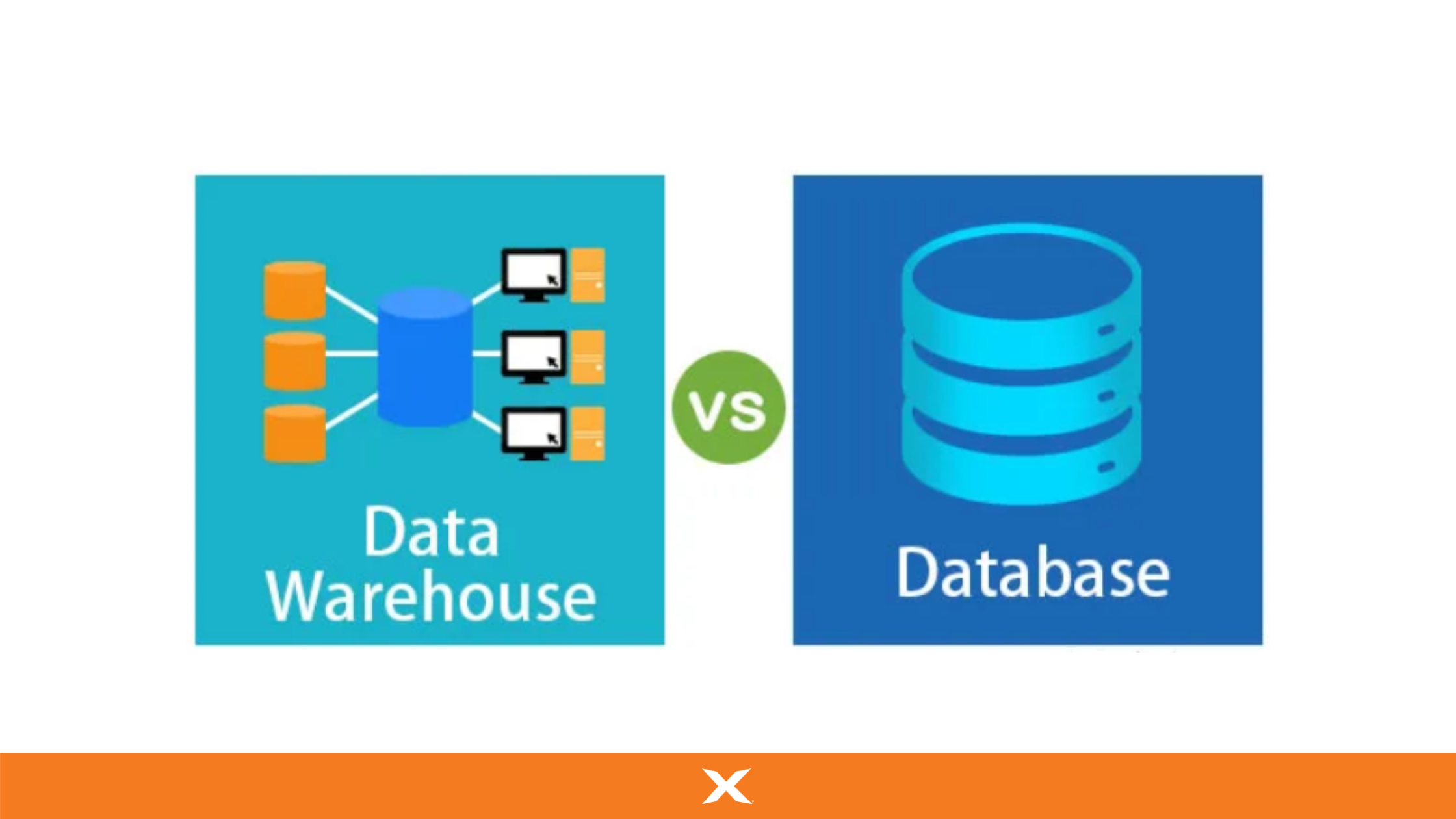5 min read
Data Warehouse vs Database: Everything You Need to Know
Written by: Juan Keena, Chief Marketing Officer - October 4, 2021

The data warehouse vs database debate has been going on for many years. Which is better? What are the benefits of each? Is there a correct answer to this question? The data warehouse and the database have different purposes, so they might not be mutually exclusive. However, we can still look at how these data storage systems work and their strengths to make an informed decision about the ideal method to use for your data management needs.
This article explains the differences between a data warehouse and a database by comparing their key features. Specifically, we will discuss how they compare in terms of data volume, data retrieval, applications, and query processing speed. We'll also explore how each of them works.
But before we dive deeper, let's define each of these terms
- What is a Data Warehouse?
A data warehouse is an extensive collection of data you store in a repository for analysis and reporting. You can use it to streamline your organization's decision-making process by improving the information available for analysis. This is why some people refer to a data warehouse as a "decision support system."
Its typical characteristics are:
- Data redundancy
- Data consistency
- Data integration
It is important to note that data warehouses are not data marts. The latter are much smaller than data warehouses. Data marts contain data for a specific purpose that does not change over time. A data warehouse stores all of an organization's primary data sources in one place. This makes it easy to analyze and draw data relationships.
1.1 Categories of Data Warehouses
Edgar F. Codd, a researcher at IBM, invented the data warehouse concept in 1970. Since then, developers have continuously developed and improved this concept. Categorically, developers have addressed data integration, data quality, data analysis, and data governance issues.
In recent years there has been an increasing interest in data warehouse technology. The increase of data available in organizations and the need to respond quickly to market changes are the drivers of this deep interest.
1.2 Applications of Data Warehouses
The applications of data warehouse technology fall into two categories:
Sometimes, people use Business Intelligence (BI) as a synonym for data warehousing. However, BI can also refer to some particular software (BI tools) that you can use in data warehousing. Often data warehouses use data mining and statistical analysis techniques to analyze data. You can refer to these specific techniques as business intelligence.
An example of a data warehouse is the Department of Labor's data storage system. It contains all the information related to unemployment benefits. The objective of this data warehouse is to streamline the decision-making process of the Labor Department.
Another example is an online data warehouse that consolidates data from several sources, such as clickstream data, demographics data, and purchase history data. The objective of this data warehouse would be to analyze the relationships between these data sets. In addition, it identifies patterns for marketing purposes (information products, advertisements, etc.)
Google created this data warehouse from data that is available on its website. This data warehouse includes web pages visited, users' IP addresses, and browser types. The objective of this data warehouse is to assist Google in improving its search engine.
- What is a Database?
A database is a collection of data organized for ease of access and use. A database management system (DBMS) manages the database. This makes it easy to retrieve and update information effectively.
Apart from being easy to access, databases are also responsible for ensuring proper data storage. You should not consider a database helpful unless it guarantees the integrity of its contents. This means that database management systems must ensure that the database does not store different pieces of information under a single name.
2.1 How Does a Database Work?
The database itself is normally stored on storage units such as disks, tapes, or other magnetic media.
You should organize your data in database tables according to defined rules. The database should ensure data integrity by enforcing referential and logical rules. Referential rules relate database objects to other objects. On the other hand, logical rules ensure that the information in database tables is complete and consistent.
The database must support any number of users simultaneously while providing fast access to stored information. Database management systems are based on a multi-user, client-server model to accomplish this. This architecture is also known as database processing.
Database management systems also summarize the database within a database language. This helps to define how applications or end-users can access database objects and operations.
2.2 Database Management Systems
While a database may appear simple at first glance, it actually contains an enormous amount of complex information that must be organized under strict database rules and retrieval methods. In other words, DBMSs are the brains that systematically organize database information while accessing human users and applications.
Database management systems come in two main types:
- Hierarchical database management systems (HDBMS) store data according to a hierarchical structure
- Network database management systems (NDBMS) store data as a graph of database objects
- The Difference between a Data Warehouse and Database

Data warehouses and databases are often confused because they are used interchangeably in the popular press. However, they represent two different storage methods, with varying implications for management time, hardware costs, and technical support requirements.
In a database, you can modify each record of your data, but you can't add or remove documents. In data warehouses, this is not the case. Data warehouses allow modifications to individual records, and you can add new information, but you can't remove it.
This means you can use data warehouses for far more sophisticated data analysis than traditional databases with a fixed data set. Data warehouses can store both historical and current data, so it is possible to perform data comparisons from different periods.
Sometimes, people use the term “corporate memory” to refer to a data warehouse because it stores all of an organization's data. The data is often stored in several data warehouses and analyzed as part of data mining.
Data warehouses are very popular with companies because they can combine data from various data sources. This makes it easier to track data for management decisions. The information you gather from data warehouses is critical to the success of data mining and data warehousing.
- Data Warehouse vs Database: A Comparison of their Key Features
4.1 Data Volume
You design a database to manage smaller datasets and handle the data volumes within a relational table space (row) format. However, with a data warehouse, you can handle much larger data sets. This makes it more cost-effective to maintain one tablespace per subject or topic of data.
4.2 Data Retrieval
Databases can typically retrieve data faster by sorting data by key fields, such as a customer's name or address. Data warehouses usually require users to query and extract data from multiple tables and subject areas (rows). This process may take longer than with databases because you must query, analyze, and aggregate the data to produce results, which can take a while depending on data volume.
4.3 Query Processing Speed
Databases are designed for high-speed data retrieval because they use indexes to quickly look up data by key fields. On the other hand, data warehouses process queries much slower than databases. However, data warehouses can process data from multiple tables much faster.
4.4 Appropriate Use
Generally, you use a database to manage small data sets that have to be queried quickly, like a customer database with key fields being name and address. On the other hand, you use data warehouses to manage more extensive data sets (like customer databases) - where you need to aggregate data needs from different subject areas for data analysis.
Conclusion
Data warehouses and databases are two distinct ways of storing data, with different implications for managing time, hardware costs, and technical support requirements. The most striking difference between them is that you can modify each data record in a database, but you can't add or remove records. On the other hand, data warehouses allow modifications to individual records, and you can add new information, but you can't remove it.
About TimeXtender
TimeXtender is an automated, low-code, drag-and-drop Data Estate Builder that empowers you to build a Modern Data Estate up to 10x faster than standard methods, prepare data for analysis, and make quality business decisions with data, mind, and heart. We do this for one simple reason: because time matters.
As a Microsoft Gold Certified Partner, we serve our 3,000+ customers, from mid-sized companies to Fortune 500, through our global network of partners.
Visit the TimeXtender customer page to learn how we are helping clients build reliable data estates faster than standard methods.

